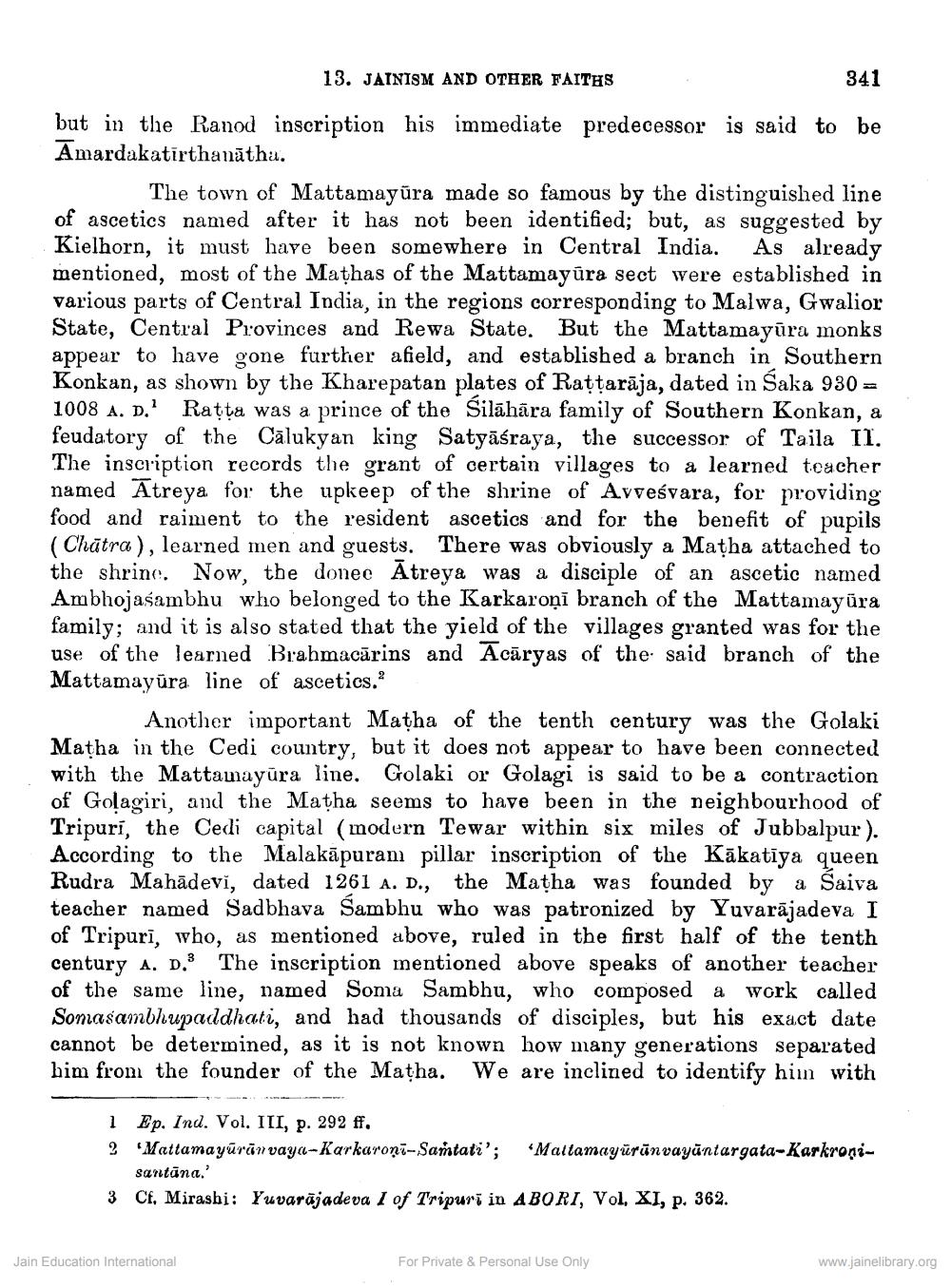________________
13. JAINISM AND OTHER FAITHS
341
but in the Ranod inscription his immediate predecessor is said to be Amardakatirthanāthu.
The town of Mattamayūra made so famous by the distinguished line of ascetics named after it has not been identified; but, as suggested by Kielhorn, it must have been somewhere in Central India. As already mentioned, most of the Mathas of the Mattamayūra sect were established in various parts of Central India, in the regions corresponding to Malwa, Gwalior State, Central Provinces and Rewa State. But the Mattamayūra monks appear to have gone further afield, and established a branch in Southern Konkan, as shown by the Kharepatan plates of Rattarāja, dated in Saka 930 = 1008 A. D.' Ratta was a prince of the Silāhāra family of Southern Konkan, a feudatory of the Cālukyan king Satyāśraya, the successor of Taila II. The inscription records the grant of certain villages to a learned teacher named Atreya for the upkeep of the shrine of Avveśvara, for providing food and raiment to the resident ascetics and for the benefit of pupils (Chātra ), learned men and guests. There was obviously a Matha attached to the shrine. Now, the donee Atreya was a disciple of an ascetic named Ambhojasambhu who belonged to the Karkaroņi branch of the Mattamayūra family; and it is also stated that the yield of the villages granted was for the use of the learned Brahmacārins and Acāryas of the said branch of the Mattamayūra line of ascetics.
Another important Matha of the tenth century was the Golaki Matha in the Cedi country, but it does not appear to have been connected with the Mattamayūra line. Golaki or Golagi is said to be a contraction of Golagiri, and the Matha seems to have been in the neighbourhood of Tripuri, the Cedi capital (modern Tewar within six miles of Jubbalpur). According to the Malakāpuram pillar inscription of the Kākatīya queen Rudra Mahādevi, dated 1261 A. D., the Matha was founded by a Saiva teacher named Sadbhava Sambhu who was patronized by Yuvarājadeva I of Tripurī, who, as mentioned above, ruled in the first half of the tenth century A. D.3 The inscription mentioned above speaks of another teacher of the same line, named Soma Sambhu, who composed a work called Sonasambhupaddhati, and had thousands of disciples, but his exact date cannot be determined, as it is not known how many generations separated him from the founder of the Matha. We are inclined to identify him with
1 Ep. Ind. Vol. III, p. 292 ff. 2 Mattamayūrän vaya-Karkaroņi-Samtati'; "Mattamayürünvayāntargata-Karkroni
santāna.' 3 CE. Mirashi: Yuvarājadeva I of Tripuri in A BORI, Vol. XI, p. 362.
Jain Education International
For Private & Personal Use Only
www.jainelibrary.org




